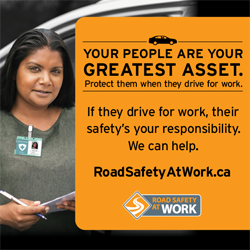SafeCare BC has issued a policy bulletin outlining proposed changes to the Workers Compensation Act in Bill 9. First Reading of the Bill is underway and it is anticipated to pass in the current spring sitting. Read below for the full policy bulletin or visit www.safecarebc.ca.
Want To Learn More About Workplace Safety?

SafeCare BC Executive Director, Jennifer Lyle, will be presenting two sessions on workplace safety at the 2015 BC Care Providers Association Annual Conference. The two sessions are titled:
- Linking Person-Centred Care to Staff Safety: Training through a Dementia Lens
- Safety in Our DNA: How Organizational Culture is Harnessed to Create Safer Work Environments
SafeCare BC’s sessions are part of a stream of presentations on Occupational Health & Safety(OHS), including a presentation by WorkSafeBC. In this special WorkSafeBC session participants will learn about Point of Care inspections being conducted by Prevention Officers in long-term care facilities and what to expect if an officer shows up at your facility.
With over 60 speakers as well as 24 panel discussions and presentations, this is a conference you will not want to miss! Don’t wait, register today!
SafeCare BC: Overview of Bill 9 (Workers Compensation Amendment Act): April 10, 2015

SafeCare BC would like to inform its members regarding Bill 9 (Workers Compensation Amendment Act, 2015)[1] as well as any potential impacts it could have on employers within the continuing care sector. On February 11, 2015 the BC Government tabled Bill 9, which, if passed, could expand WorkSafe BC’s powers to deal with non-compliance as well as increase an employers’ obligations with respect to work place health and safety. In particular, the amendments expand WorkSafeBC’s ability to encourage compliance with safety regulations, expedite investigation of workplace incidents and to issue stop work orders where unsafe conditions present a risk to workers. The legislation will also permit WorkSafeBC to seek a court injunction to prohibit the worst employer offenders from continuing to operate in an industry when they ignore WorkSafeBC orders and continue to use unsafe practices.[2]
Background
The impetus for the proposed changes to the Act stem primarily from sawmill explosions that occurred in 2012 in Burns Lake and Prince George which killed four people.[3] Following the explosions, WorkSafe BC Administrator, Gord Macatee, in his July 1, 2014 WorkSafeBC Review and Action Plan recommended 43 amendments to the Workers Compensation Act.[4] On July 15, 2014 Shirley Bond, Minister of Jobs, Tourism and Skills Training and Minister Responsible for Labour, and the board of directors of WorkSafeBC accepted all 43 recommendations, 12 of which required consideration of legislative changes. Bill 9 seeks to complete the implementation of Macatee’s recommendations.[5] In summary, the proposed legislation has four specific objectives, including: 1) Providing a range of new safety enforcement tools; 2) Shortening the process for finalizing financial penalties to improve their effectiveness as an enforcement tool; 3) Ensuring timely employer investigations of workplace incidents and reports; 4) Enhancing workplace safety expertise on the WorkSafeBC board of directors.[6] The increased powers to WorkSafeBC to deal with non-complying employers include:
- Power to issue a stop work order at one or several workplaces belonging to an employer where a high risk to workers or reoccurring non-compliance with a provision is found;
- Power to seek court order restraining most egregious employers from operating in an industry;
- Fines up to $1000 for less serious contraventions; and,
- The ability to enter into a Compliance Agreement with employers found in non-compliance.[7]
Incident Investigations and Reporting
Changes are also to be made to employers’ obligation in respect to incident investigations and reporting. The new obligations include the introduction of a two part incident investigation requirement wherein employers must complete a Preliminary Investigation within 48 hours of the safety incident.[8] Additionally, an employer must undertake necessary corrective action “without undue delay” to prevent a similar incident from occurring while a full investigation is being conducted. WorkSafe BC will continue to require a full investigation submitted within 30 days of the safety incident. Failure to comply may result in financial penalties. [9] In response to a WorkSafeBC inspection, the WorkSafe BC Board and Employer may voluntarily enter a “Compliance Agreement”. A Compliance Agreement describes what actions the employer agrees to take within a stated time frame. The agreement may be rescinded by the Board if it isn’t fulfilled or if it no longer adequately protects the health or safety of workers. As outlined earlier, WorkSafeBC may impose an https://bccare.ca/wp-content/uploads/2022/08/medcare-img22.jpgistrative penalty of no more than $1,000 when satisfied “on the balance of probabilities” that the employer failed to comply with a provision or regulation.[10] In light of the proposed amendments, operators or care facilities and staff should familiarize themselves with the new regulatory requirements and prepare to revise their internal incident investigation policies as necessary. SafeCare BC will attempt to provide further details on the bill and how it may affect members at it goes through the legislative process. SafeCare BC will also be looking at further ways to educate its members on Bill 9 through its various workshops and training sessions.
Summary of Amendments:
- On-the-Spot Citations: Amendments allow WorkSafeBC to impose an on-the-spot financial penalty of up to $1,000 against employers for certain violations. Status quo of having no financial penalties against workers is maintained.
- Compliance Agreements: WorkSafeBC will be able to enter into voluntary compliance agreements with employers for non-repeat violations, setting out what employer agrees to do and by what date.
- Investigations: For incidents which must be reported and investigated immediately (including an incident that resulted in an injury to a worker requiring medical treatment), employers are to undertake two investigations:
- A preliminary investigation must be done immediately and includes identifying any corrective action needed to prevent the recurrence of a similar incident during the second, full investigation (detailed below). Employers must take the identified corrective action without undue delay and prepare a report of the investigation within 48 hours of the incident.
- A full investigation must then be conducted to identify the causes and unsafe conditions related to the incident and to identify any necessary corrective action. Employers must take the necessary corrective action without undue delay and prepare and send to WorkSafeBC a report of the findings within 30 days of the incident. (The timeline for the report may be extended by WorkSafeBC where appropriate.)
- If corrective action is taken as result of either investigation, a report of the action taken must be provided to workplace Joint Committee or Worker Health and Safety Representative, as appropriate.
- Stop Work Orders Expanded: WorkSafeBC will be able to stop work at workplaces where unsafe conditions present a high risk to workers, or where a repeat contravention puts workers at risk.
- Court Powers Expanded: The Court will be able to grant an injunction against employers, including directors and senior officers of a corporation, restraining them from carrying on an industry or activity if they contravene workplace safety requirements or fail to pay a penalty.
- Time to Request a Review of a Decision: Amendments allow the consideration of a shorter time frame within which to request a review of a WorkSafeBC prevention order or penalty (currently 90 days), and the time within which a decision is to be rendered (currently 150 days).[11]
[1] Workers Compensation Amendment Act, 2015 (Bill 9). http://www.leg.bc.ca/40th4th/1st_read/gov09-1.htm. [2] New Legislation Improves Worker Safety. Ministry of Jobs, Tourism and Skills Training, February 11, 2015. http://www.newsroom.gov.bc.ca/2015/02/new-legislation-improves-worker-safety.html. [3] Proposed bill to protect employees applies 12 WorkSafeBC recommendations. Mike Hager. The Globe and Mail. Feb. 11 2015. Accessed at: http://www.theglobeandmail.com/news/british-columbia/new-bc-law-would-allow-for-prosecution-of-negligent-employers/article22930397/ [4] Workers Compensation Act, RSBC 1996 (Chapter 492). http://www.bclaws.ca/civix/document/LOC/complete/statreg/–%20W%20–/Workers%20Compensation%20Act%20[RSBC%201996]%20c.%20492/00_Act/96492_01.xml. [5] Legislative Briefing: A Labour Relations Services Publication – Vol. 01, February 16, 2015 Metro Vancouver. WORKERS COMPENSATION AMENDMENT ACT (BILL 9, 2015). Accessed at: http://www.metrovancouver.org/services/labour-relations/LabourRelationsPublications/V01-Legislative_Briefing-2015-02-16.pdf [6] New Legislation Improves Worker Safety. Ministry of Jobs, Tourism and Skills Training, February 11, 2015. http://www.newsroom.gov.bc.ca/2015/02/new-legislation-improves-worker-safety.html. [7] Occupational Health and Safety Bulletin. Proposed Changes to Employers’ Occupational Health and Safety Obligations. Lawson Lundell Law firm. February 13, 2015. Accessed at: http://www.lawsonlundell.com/media/news/476_OH_S%20Bulletin%20-%20Proposed%20Changes%20to%20Enhance%20Compliance%20_%20Enforcement%20Powers%20for%20WorkSafeBC.pdf [8] As per section 173of the Act, (1) an employer must immediately undertake an investigation into the cause of any accident or other incident that (a) is required to be reported by section 172, (b) resulted in injury to a worker requiring medical treatment, (c) did not involve injury to a worker, or involved only minor injury not requiring medical treatment, but had a potential for causing serious injury to a worker, or (d) was an incident required by regulation to be investigated. (2) Subsection (1) does not apply in case of a vehicle accident occurring on a public street or highway. [9] Occupational Health and Safety Bulletin. Proposed Changes to Employers’ Occupational Health and Safety Obligations. Lawson Lundell Law firm. February 13, 2015. Accessed at: http://www.lawsonlundell.com/media/news/476_OH_S%20Bulletin%20-%20Proposed%20Changes%20to%20Enhance%20Compliance%20_%20Enforcement%20Powers%20for%20WorkSafeBC.pdf [10] The Board may issue an order to “stop work” when it has “reasonable grounds for believing there is a high risk of serious injury, serious illness or death to a worker at a workplace” rather than an “immediate danger that would likely result in serious injury, serious illness, or death to a worker”. In addition, the language is expanded to cover repeat contraventions and contraventions at another workplace by the same employer. [11] Law and Policy Bulletin. BC Employers’ Advisers Office. Bill 9 – 2015 Workers Compensation Amendment Act, 2015 – First Reading. March 2015.






